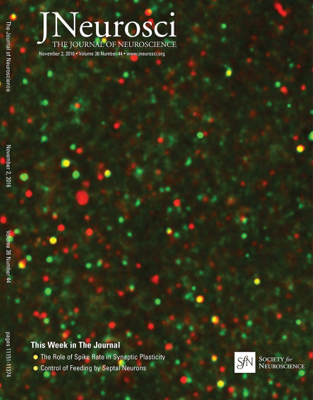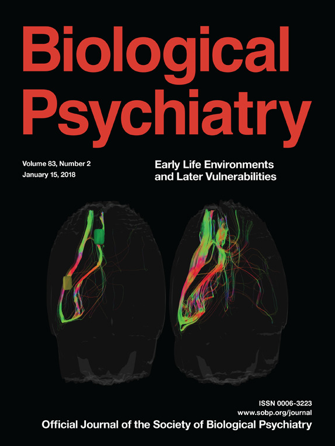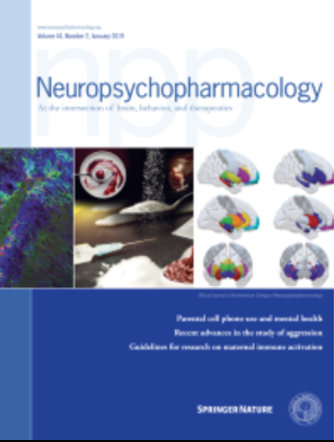


Lichtenstein, H. D., Sequeira, M. K., & Bolton, J. L. (2025). The link between early-life adversity and later alcohol use disorder: A role for Microglia? Neurobiology of Stress, 35, 100714. https://doi.org/10.1016/j.ynstr.2025.100714
Mroue-Ruiz, F. H., Garvin, M., Ouellette, L., Sequeira, M. K., Lichtenstein, H., Kar, U., & Bolton, J. L. (2024). Limited Bedding and Nesting as a Model for Early-Life Adversity in Mice. Journal of visualized experiments : JoVE, (209), 10.3791/66879. https://doi.org/10.3791/66879
Sequeira, M. K., & Bolton, J. L. (2023). Stressed microglia: Neuroendocrine-neuroimmune interactions in the stress response. Endocrinology. https://doi.org/10.1210/endocr/bqad088
Garvin, M. M., & Bolton, J. L. (2022). Sex-specific behavioral outcomes of early-life adversity and emerging microglia-dependent mechanisms. Frontiers in behavioral neuroscience, 16, 1013865. https://doi.org/10.3389/fnbeh.2022.1013865
Ngozi Z, Bolton JL. Microglia Don't Treat All Neurons the Same: The Importance of Neuronal Subtype in Microglia-Neuron Interactions in the Developing Hypothalamus. Front Cell Neurosci. 2022;16:867217. Published 2022 Apr 15. doi:10.3389/fncel.2022.867217
Bolton, J. L., Short, A. K., Othy, S., Kooiker, C. L., Shao, M., Gunn, B. G., Beck, J., Bai, X., Law, S. M., Savage, J. C., Lambert, J. J., Belelli, D., Tremblay, M.-È., Cahalan, M. D., & Baram, T. Z. (2022). Early stress-induced impaired microglial pruning of excitatory synapses on immature CRH-expressing neurons provokes aberrant adult stress responses. Cell Reports, 38(13), 110600. https://doi.org/10.1016/j.celrep.2022.110600
Bolton, J. L., Schulmann, A., Garcia-Curran, M. M., Regev, L., Chen, Y., Kamei, N., Shao, M., Singh-Taylor, A., Jiang, S., Noam, Y., Molet, J., Mortazavi, A., & Baram, T. Z. (2020). Unexpected transcriptional programs contribute to hippocampal memory deficits and neuronal stunting after early-life adversity. Cell Reports, 33(11), 108511. https://doi.org/10.1016/j.celrep.2020.108511
Davis, L. K., Bolton, J. L., Hanson, H., & Guarraci, F. A. (2020). Modified limited bedding and nesting is a model of early-life stress that affects reproductive physiology and behavior in female and male long-evans rats. Physiology & Behavior, 224, 113037. https://doi.org/10.1016/j.physbeh.2020.113037
Okhuarobo, A., Bolton, J. L., Igbe, I., Zorrilla, E. P., Baram, T. Z., & Contet, C. (2020). A novel mouse model for vulnerability to alcohol dependence induced by early-life adversity. Neurobiology of Stress, 13, 100269. https://doi.org/10.1016/j.ynstr.2020.100269
Birnie, M. T., Kooiker, C. L., Short, A. K., Bolton, J. L., Chen, Y., & Baram, T. Z. (2020). Plasticity of the reward circuitry after early-life adversity: Mechanisms and significance. Biological Psychiatry, 87(10), 875–884. https://doi.org/10.1016/j.biopsych.2019.12.018
Bolton, J. L., Short, A. K., Simeone, K. A., Daglian, J., & Baram, T. Z. (2019). Programming of stress-sensitive neurons and circuits by early-life experiences. Frontiers in Behavioral Neuroscience, 13. https://doi.org/10.3389/fnbeh.2019.00030
Baram, T. Z., & Bolton, J. L. (2019). Parental smartphone use and children’s mental outcomes: a neuroscience perspective. Neuropsychopharmacology, 44(2), 239-240.
Levis, S. C., Bentzley, B. S., Molet, J., Bolton, J. L., Perrone, C. R., Baram, T. Z., & Mahler, S. V. (2019). On the early life origins of vulnerability to opioid addiction. Molecular Psychiatry, 26(8), 4409–4416. https://doi.org/10.1038/s41380-019-0628-5
Jiang, S., Kamei, N., Bolton, J. L., Ma, X., Stern, H. S., Baram, T. Z., & Mortazavi, A. (2019). Intra-individual methylomics detects the impact of early-life adversity. Life Science Alliance, 2(2), 1–8. https://doi.org/10.26508/lsa.201800204
Bilbo, S. D., Block, C. L., Bolton, J. L., Hanamsagar, R., & Tran, P. K. (2018). Beyond infection - maternal immune activation by environmental factors, microglial development, and relevance for autism spectrum disorders. Experimental Neurology, 299, 241–251. https://doi.org/10.1016/j.expneurol.2017.07.002
Bolton, J. L., Molet, J., Regev, L., Chen, Y., Rismanchi, N., Haddad, E., Yang, D. Z., Obenaus, A., & Baram, T. Z. (2018). Anhedonia following early-life adversity involves aberrant interaction of reward and anxiety circuits and is reversed by partial silencing of amygdala corticotropin-releasing hormone gene. Biological Psychiatry, 83(2), 137–147. https://doi.org/10.1016/j.biopsych.2017.08.023
Bolton, J. L., Ruiz, C. M., Rismanchi, N., Sanchez, G. A., Castillo, E., Huang, J., Cross, C., Baram, T. Z., & Mahler, S. V. (2018). Early-life adversity facilitates acquisition of cocaine self-administration and induces persistent anhedonia. Neurobiology of Stress, 8, 57–67. https://doi.org/10.1016/j.ynstr.2018.01.002
Singh-Taylor, A., Molet, J., Jiang, S., Korosi, A., Bolton, J. L., Noam, Y., Simeone, K., Cope, J., Chen, Y., Mortazavi, A., & Baram, T. Z. (2017). NRSF-dependent epigenetic mechanisms contribute to programming of stress-sensitive neurons by neonatal experience, promoting resilience. Molecular Psychiatry, 23(3), 648–657. https://doi.org/10.1038/mp.2016.240
Hanamsagar, R., Alter, M. D., Block, C. S., Sullivan, H., Bolton, J. L., & Bilbo, S. D. (2017). Generation of a microglial developmental index in mice and in humans reveals a sex difference in maturation and immune reactivity. Glia, 66(2), 460–460. https://doi.org/10.1002/glia.23277
Bolton, J. L., Wiley, M. G., Ryan, B., Truong, S., Strait, M., Baker, D. C., Yang, N. Y., Ilkayeva, O., O'Connell, T. M., Wroth, S. W., Sánchez, C. L., Swamy, G., Newgard, C., Kuhn, C., Bilbo, S. D., & Simmons, L. A. (2017). Perinatal western‐type diet and associated gestational weight gain alter postpartum maternal mood. Brain and Behavior, 7(10). https://doi.org/10.1002/brb3.828
Bolton, J. L., Molet, J., Ivy, A., & Baram, T. Z. (2017). New insights into early-life stress and behavioral outcomes. Current Opinion in Behavioral Sciences, 14, 133–139. https://doi.org/10.1016/j.cobeha.2016.12.012
Bolton, J. L., Marinero, S., Hassanzadeh, T., Natesan, D., Le, D., Belliveau, C., Mason, S. N., Auten, R. L., & Bilbo, S. D. (2017). Gestational exposure to air pollution alters cortical volume, microglial morphology, and microglia-neuron interactions in a sex-specific manner. Frontiers in Synaptic Neuroscience, 9. https://doi.org/10.3389/fnsyn.2017.00010
Chen, Y., Molet, J., Lauterborn, J. C., Trieu, B. H., Bolton, J. L., Patterson, K. P., Gall, C. M., Lynch, G., & Baram, T. Z. (2016). Converging, synergistic actions of multiple stress hormones mediate enduring memory impairments after acute simultaneous stresses. The Journal of Neuroscience, 36(44), 11295–11307. https://doi.org/10.1523/jneurosci.2542-16.2016
Hanamsagar, R., Bolton, J., Alter, M., & Bilbo, S. (2015). Microglia show sex-differences in gene expression patterns over development and following immune challenge: Relevance for sex-differences in neurodevelopmental disorders. Brain, Behavior, and Immunity, 49, 10–11. https://doi.org/10.1016/j.bbi.2015.06.056
Bolton, J. L., Auten, R. L., & Bilbo, S. D. (2014). Prenatal air pollution exposure induces sexually dimorphic fetal programming of metabolic and neuroinflammatory outcomes in adult offspring. Brain, Behavior, and Immunity, 37, 30–44. https://doi.org/10.1016/j.bbi.2013.10.029
Guarraci, F. A., & Bolton, J. L. (2014). “sexy stimulants”: The interaction between psychomotor stimulants and sexual behavior in the female brain. Pharmacology Biochemistry and Behavior, 121, 53–61. https://doi.org/10.1016/j.pbb.2013.11.006
Bolton, J. L., Huff, N. C., Smith, S. H., Mason, S. N., Foster, W. M., Auten, R. L., & Bilbo, S. D. (2013). Maternal stress and effects of prenatal air pollution on offspring mental health outcomes in mice. Environmental Health Perspectives, 121(9), 1075–1082. https://doi.org/10.1289/ehp.1306560
Winland, C., Bolton, J. L., Ford, B., Jampana, S., Tinker, J., Frohardt, R. J., Guarraci, F. A., & Zewail-Foote, M. (2012). “Nice guys finish last”: Influence of mate choice on reproductive success in Long–Evans Rats. Physiology & Behavior, 105(3), 868–876. https://doi.org/10.1016/j.physbeh.2011.10.022
Bolton, J. L., Smith, S. H., Huff, N. C., Gilmour, M. I., Foster, W. M., Auten, R. L., & Bilbo, S. D. (2012). Prenatal air pollution exposure induces neuroinflammation and predisposes offspring to weight gain in adulthood in a sex‐specific manner. The FASEB Journal, 26(11), 4743–4754. https://doi.org/10.1096/fj.12-210989
Winland, C., Haycox, C., Bolton, J. L., Jampana, S., Oakley, B. J., Ford, B., Ornelas, L., Burbey, A., Marquette, A., Frohardt, R. J., & Guarraci, F. A. (2011). Methamphetamine enhances sexual behavior in female rats. Pharmacology Biochemistry and Behavior, 98(4), 575–582. https://doi.org/10.1016/j.pbb.2011.03.001